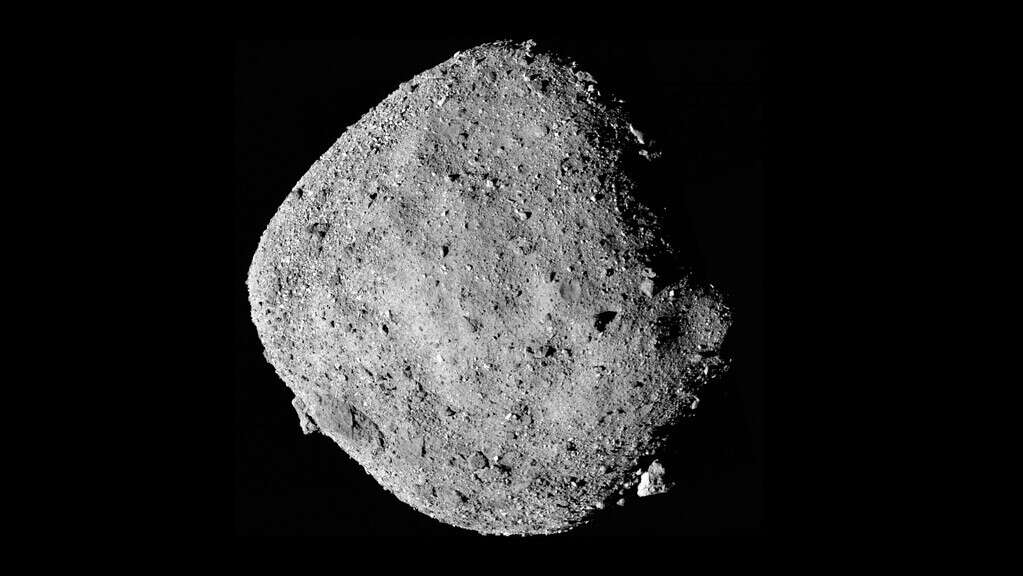
Bennu, a near-Earth asteroid first discovered in 1999, has now become an unlikely tool in the search for something extraordinary — a fifth fundamental force of nature that could rewrite the rules of the universe.
For decades, scientists have understood the cosmos through the lens of four forces: gravity, electromagnetism, and the strong and weak nuclear forces. But for just as long, there have been whispers of a missing piece, a fifth force, waiting to be discovered. Now, with the help of Bennu, a team of international scientists believes they are inching closer to solving one of physics’ biggest mysteries.
The Search For The Fifth Force
In 2023, on a sunny morning in the Utah desert, a spacecraft returned to Earth after one of the most epic journeys in the history of human exploration. It made a trek of more than two billion miles. Inside was a capsule containing a treasure from the distant past: a sample of rock and dust from an ancient asteroid named Bennu.
Bennu is a spinning-top-shaped asteroid just 500 meters wide. It’s like a time capsule that holds the secrets of our solar system’s formation dating back over 4.5 billion years. Made of loose rubble, Bennu is thought to contain primordial compounds, including organic molecules that may have contributed to the rise of life on Earth. When the OSIRIS-REx spacecraft touched down on its surface in October 2020, it gathered these fragments, which could shed light on the building blocks of our own planet.
The data from that mission has already been a treasure trove for planetary science. But for physicists like Yu-Dai Tsai from Los Alamos National Laboratory, Bennu’s path through space offers something more: a chance to detect an invisible hand shaping its motion.
“Interpreting the data we see from tracking Bennu has the potential to add to our understanding of the theoretical underpinnings of the universe,” Tsai said.
His team’s study suggests that small, barely detectable deviations in Bennu’s orbit could signal the presence of a fifth force — a force that might help explain dark matter, the mysterious substance that makes up most of the universe but remains unseen.
In many ways, this is not a new idea. Physicists have been on the hunt for a fifth force since the 1980s. They’ve imagined it as everything from a form of antigravity to a cosmic essence they dubbed “quintessence,” thought to explain the universe’s accelerating expansion. But the precise movements of Bennu offer a rare, controlled environment to test this idea in real time.
<!– Tag ID: zmescience_300x250_InContent_3
–>
Anomalies
Here’s how it works: as Bennu orbits the Sun, it is pulled by gravity, nudged by solar radiation, and impacted by tiny forces we can’t see. Imagine playing a game of billiards, but every ball moves with a slight, invisible push. You would start to suspect that the table was slightly tilted — even if you couldn’t see the tilt. That ’tilt’ is essentially what Tsai and his team are trying to uncover.
The researchers studied Bennu’s exact orbit using data from OSIRIS-REx and earlier ground-based observations. They then asked: Is there anything in Bennu’s path that doesn’t quite add up? Could there be a subtle force, too small to measure directly, but strong enough to alter the asteroid’s journey?
“The trajectories of objects often feature anomalies that can be useful in discovering new physics,” said Tsai. Indeed, this kind of detective work has yielded scientific breakthroughs before. In the mid-1800s, astronomers used tiny irregularities in the orbit of Uranus to predict the existence of Neptune — decades before they had the telescopic power to spot it directly through a lens.
But there’s a catch. For every Neptune, there’s also a Vulcan. That was the name for a hypothetical planet that scientists once believed existed between Mercury and the Sun, used to explain oddities in Mercury’s orbit. Turns out, it didn’t exist at all (though it made for good Star Trek lore).
A Window Into Dark Matter?
Bennu might not hold all the answers, but it’s giving researchers an important clue. In their analysis, Tsai’s team didn’t find evidence of a fifth force — yet. What they did find were some of the most stringent limits ever placed on how strong or far-reaching such a force could be.
If this fifth force exists, it’s hiding very well. The team was able to rule out certain models of fifth forces that rely on particles known as ultralight bosons. Some physicists believe these bosons could reveal dark matter.
Dark matter, the invisible substance that makes up roughly 85 percent of all matter in the universe, has long eluded scientists. We know it’s there because galaxies spin faster than they should based on their visible matter alone—something is holding them together. But what that “something” is remains one of science’s greatest enigmas. Finding a fifth force could provide a much-needed breakthrough.
Eyes on Apophis
Bennu may not have cracked the case, but it’s just the beginning. Tsai’s team plans to continue their work by studying Apophis, another near-Earth asteroid that will make a spectacularly close flyby in 2029, passing within just 20,000 miles of our planet. NASA’s OSIRIS-APEX mission will track Apophis as it zooms by, and the team hopes it will provide even better data to test for the elusive fifth force.
“The tight constraints we’ve achieved translate to some of the tightest-ever limits on Yukawa-type fifth forces,” said Sunny Vagnozzi, a cosmologist from the University of Trento and a co-author on the study, referring to the mathematical framework used to describe these forces.
For now, though, the search continues. As this research shows, asteroids aren’t mere space debris, but could hold the key to forces we can’t see — but which shape everything around us.
The findings appeared in the journal Communications Physics.
